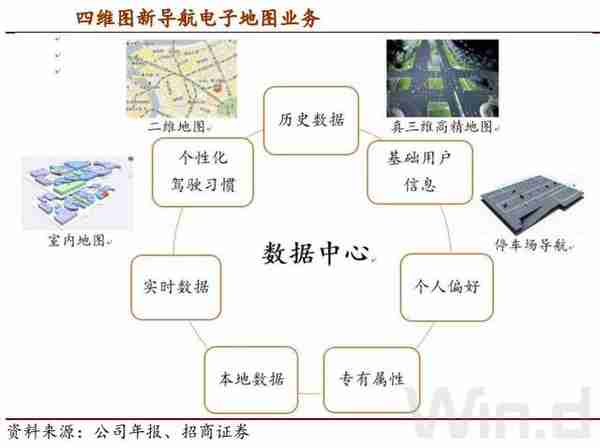
编者按
5月12日,俄罗斯瓦尔代国际辩论俱乐部网站发表中国建设银行研究院高级研究员、清华大学战略与安全研究中心客座研究员,中国论坛特约专家余翔的英文评论文章“Prospects for De-Dollarisation of the World Monetary System and Settlements in National Currencies(国际货币体系去美元化和本币结算前景)”。余翔认为,未来国际货币体系的一个过渡性特征是美元继续主导国际经济体系,同时国家之间用本币结算的比例不断提高。但国际货币体系的变革与调整是一个漫长的过程,对此必须保持客观理性。中国论坛受权首发中文,以飨读者。
国际货币体系去美元化和本币结算前景[1]
国际货币体系是指对货币的国际兑换、国际收支调节等所做的制度安排和惯例。国际货币体系不是永恒不变的,而会随着环境变化而演变。二战后期,美国主导构建了布雷顿森林体系,其核心是以美元为计价、交易和价值贮藏手段。在1971年至2008年金融危机爆发前的几十年中,布雷顿森林体系发生过变化,美元和黄金挂钩的机制废止,各国货币汇率进入名义上自由浮动的牙买加体系,但美元作为国际货币体系的根基并未动摇。
2008年金融危机爆发后,国际力量格局变化叠加新技术革命对美元国际货币体系霸主地位发出新的挑战,世界经济去美元化速度加快。
一是多极化的国际经济格局深入发展。美国GDP占世界GDP的比重从1960年的40%下降至2021年的24%。四五十年前,亚洲GDP仅占全世界的20%,2021年已升至47%。近10年来,中国经济对世界经济增长贡献率稳定在30%左右。即便在全球疫情肆虐的过去两年,中国两年经济平均增速仍达到5.1%,在全球主要经济体中名列前茅,持续成为世界经济增长的引擎。这改变了战后几十年美国长期作为世界经济火车头的地位。经济基础决定国际格局,国际格局需要有更多主权货币来便利化国际支付结算、国际收支调节等。
二是美国继续透支美元信用。特朗普领导下的美国,在所谓“美国优先”原则指引下,大打“贸易战”、“关税战”,玩“零和博弈”,严重透支了美国的国际领导力。拜登政府上台后并未调整特朗普政府经济政策,让美元的国际信用进入不可逆转地下降。美联储持续宽松的货币政策,特别是新冠疫情发生后,美联储的“无限量化宽松”政策,让美元的流动性泛滥。美联储资产负债表从2020年3月的4万亿美元左右迅速膨胀到目前的超过9万亿美元,此规模是2008年金融海啸前美联储资产负债表规模的10倍。20世纪70年代,美国财政部长约翰·康纳利就曾直言不讳地说过:美元是我们的货币,却是你们的问题。[2]美联储显然是在利用美元国际体系中的特殊地位来转嫁新冠疫情的成本。俄乌冲突后,美欧联手凭借美元霸权,将俄罗斯踢出SWIFT支付体系,加重其他国家担忧,纷纷着手研究美元以外的替代计价、支付系统。[3]各国都希望能找到币值更加稳定的货币。这也正是我们所看到的:土耳其已启动减持美元资产进程,伊朗宣布其石油交易的计价预结算不再使用美元,俄罗斯开始在自然资源贸易中使用本币或欧元,欧洲主要国家力推欧洲版结算体系。
三是国际生产分工出现新变化。2008年金融危机之后,全球化进程放缓,生产本地化的趋势加强。短期内,在地缘政治和风险规避动机驱动下,区域内可能会出现“平移式”重构。全球产业链将分散收缩至多个区块,产业链区域化、本地化亦将随之成为趋势。未来全球化的新展现方式将是全球最优秀的企业在区域层面进行专业化分工,形成垂直整合的集群模式,企业所在国获得的收益比重增加。这将在一定程度上体现所谓生产布局的“公平性”,必然会推动区域性贸易交易的增加,加快区域性本币结算的兴起。
四是数字科技将推动全球产业链向智能、分散的方向发展。随着云计算、工业互联网和自动化等信息技术逐步成熟并投入商用,未来制造业将更加智能、布局更加分散,满足风险分散需求的同时,也使产业链变短变平,进一步强化上述产业链垂直整合的集群模式,加快全球产业链结构性重构。
数字科技发展带动数字货币技术应用加快,给美元体系变革带来更大外部动力。区块链技术的安全性和价值中性加强了数字货币的信用,在美元声誉下降之际,为各国提供了新选择。美国前财长、保尔森基金会主席保尔森在2021年5月美国著名期刊《外交事务》发表《美元的未来》一文中非常忧虑地提出“美国目前担心不应该是美元全球霸主地位的终结,而应是数字货币等新金融技术给美元地位带来的挑战”。[4]
但对国际货币体系的变化和发展,我们必须保持客观理性。经济史告诉我们,国际货币体系的变革与调整不会一蹴而就,会是一个漫长的历史过程,中间还会有反复。[5]
1971年8月的“尼克松冲击”是金本位向信用本位过渡的标志。美国因无法兑现美元按固定汇率兑换黄金的承诺而单方面放弃美元与黄金挂钩,布雷顿森林体系瓦解,美元丧失了国际法定储备货币地位。虽然之后对美元地位的质疑从未平息,1999年欧元作为挑战者出现,也未动摇美元的国际储备主货币角色。其原因在于美国保有世界最强大的综合国力,综合国力对主权货币的锚定作用依然是国际货币竞争的主脉络。在增强综合国力的基础上,让他国接受其他非美元主权货币的制度和模式,尤其是法律制度,应成为其他主权货币未来一段时间的核心任务。[6]
此外,其他国家在崛起过程中,还会面临来自美国的打压。所谓的“修昔底德陷阱”亦会存在于美元和新国际货币体系支柱货币之间。美元是美国全球霸权的重要支柱之一。失去美元,美国霸权将不再稳固。美国会凭借其现有的强大军事实力,竭力维护美元霸权地位。因此在争取国际货币主导权问题上,是十分小心谨慎。
在上述过程中,未来国际货币体系的一个过渡性特征是美元继续主导国际经济体系,但国家间用本币结算的比例不断提高。以“一带一路”倡议为例,俄乌冲突爆发前,沿线国家正致力于建立更加完备的金融服务体系。在沿线国家加快中资金融机构的网络化布局,搭建与SWIFT平行的非美元支付结算体系。[7]为参与“一带一路”建设的企业提供除国际结算、汇款等基本业务之外,还提供本币化的信用贷款、银行间的拆借等新业务。未来时机成熟时,还可考虑拓展到投行业务、股票期货代理、个人理财等新兴业务。俄乌冲突爆发对上述区域性经济金融深化合作会产生停滞性影响,但这种影响是暂时性的。为了加强增强抵御域外风险,相关国家用本币结算的努力预计会很快重启,并加速。

Prospects for de-dollarization of the world monetary system and settlements in national currencies[1]
Adjunct fellow at the Center for International Security and Strategy, Tsinghua University, China Forum expert, and a senior research fellow at China Construction Bank.
The international monetary system refers to the institutional arrangements and practices for pricing, currencies exchange, payments adjustment, etc. The world monetary system is not eternal but will evolve with environmental changes. At the end of World War II, the United States promoted the establishment of the Bretton Woods system, the core of which was the dollar as a means of valuation, trading, and value storage. In the decades between the 1971s and the 2008 financial crisis, the Bretton Woods system had experienced changes, the fixed link between the US dollar and gold was nullified, and the exchange rates of national currencies entered the nominally free-floating Jamaican system, however the US dollar, as the foundation of the international monetary system, didn't falter.
After the outbreak of the financial crisis in 2008, the changes in the international power pattern and the new technological revolution poses new challenges to the dollar’s hegemony, and the de-dollarization of the world economy is accelerating.
First, the multipolar global economic structure has evolved in-depth with the rapid rising of non-US countries’ GDP. The share of the US GDP in world GDP fell from 40% in 1960 to 24% in 2021. Asia's GDP accounted for 20% of the world's GDP forty or fifty years ago but rose to 47% in 2021. In the past 10 years, the contribution of China's economy to world economic growth has stabilized at about 30%. Even in the past two years of the global epidemic, China's two-year average economic growth rate has reached 5.1%, ranking first among the world's major economies and continuing to be the engine of world economic growth. This changed the United States' long-standing position as the locomotive of the world economy in the post-war decades. The economic foundation determines the international structure, which requires more sovereign currencies to facilitate international payment settlement, balance-of-payments adjustment, etc.
Second, the United States continues to overdraw US dollar credibility. Under the guidance of the so-called "America First" principle, President Trump fought a "trade war", a "tariff war" and played a "zero-sum game", which seriously overdrew the global leadership of the United States. After the Biden administration came to power, he did not adjust the Trump administration's economic and trade policies, which let the international credibility of the US dollar fall irreversibly. Furthermore, the Federal Reserve's "unlimited quantitative easing" policy after the COVID-19 pandemic flooded the liquidity of the US dollar. The Fed's balance sheet expanded from about $4 trillion in March 2020 to more than $9 trillion at present, which is 10 times the size of the Federal Reserve's balance sheet before the 2008 financial tsunami. The Federal Reserve is clearly exploiting its unique situation in the US dollar global framework to pass on the cost of the COVID-19 pandemic. Just as the former US Treasury Secretary John Connery in the 1970s said: The US dollar is our currency, but it’s your problem.[2] After the breakout of conflict between Russia and Ukraine, the United States and Europe joined hands to kick Russia out of the SWIFT payment system, compounding the concerns of different nations which rush to study alternative transactions and payment systems outside the US dollar.[3] More and more countries hope to find a more stable currency. This is exactly what we have seen. Turkey has started the process of reducing its holdings of dollar assets, Iran announced that the valuation pre-settlement of its oil transactions will no longer use the US dollar, Russia has begun to use the local currency in its natural resource trade, and major European countries have vigorously promoted the European version of the settlement system.
Third, there is a new development in the international division of production. After the 2008 financial crisis, the process of globalization slowed down, and the trend of localizing production strengthened. In the short term, driven by geopolitical and risk aversion motivation, the global industrial chain will be dispersed and contracted to multiple region blocks, and the regionalization and localization of the industrial chain will also become a trend. The new pattern of globalization in the future will be to carry out a professional division of production among the world's best enterprises at regional levels and form vertically integrated clusters, and the proportion of benefits obtained by the host countries will increase, which represents the so-called "fairness" of production layout, promote the increase of regional trade transactions, and is sure to accelerate the rise of regional local currency settlement.
Fourth, digital technology will promote the development of the global industrial chain in an intelligent and decentralized direction. With the gradual maturity and commercialization of information technologies such as cloud computing, industrial Internet, and automation, the manufacturing industry will become smarter and more diversified in the future. When meeting the needs of risk dispersion, it will also shorten and flatten the industrial chain, further strengthen the cluster model of vertical integration of the above-mentioned industrial chains, and accelerate the structure of the global industrial chain.
The security and value neutrality of blockchain is significantly fortifying the reliability of digital currencies, providing new choices to nations when the standing of the US dollar is declining. The digital technology’s impact on the US dollar system is more fundamental. Paulson, former US Treasury Secretary, and chairman of the Paulson Foundation stated with great concern in his article "The Future of the U.S. Dollar" published in the famous American journal Foreign Affairs in May 2021. He said, “The United States should not worry about the end of the global hegemony of the U.S. dollar at present, but should also worry about the status of the U.S. dollar by new financial technologies such as digital currency.”[4]
Nonetheless, we should remain objective and rational about the progress and improvement of the world monetary system. Economic history tells us to reform and adjustment of the world monetary system won't be accomplished overnight.[5] It will be a long historical process, and there will be rehashed sometimes.
The "Nixon Shock" of August 1971 denoted the transition from the gold standard to the credit standing. The United States unilaterally abandoned the peg of the U.S. dollar to gold, because it can’t keep the promise that an ounce of gold is equal to 35 dollars. Then the Bretton Woods system to some extent dysfunctioned. With it, the dollar lost its status as the only effective global reserve currency under international law. Doubts about the status of the US dollar had been increasing, the euro emerged as a challenger in 1999, but the hegemony of the US dollar has not been changed. The reason lies in the anchoring effect of comprehensive national strength behind the sovereign currency. So based on strengthening the comprehensive national strength, letting other countries widely accept non-dollar sovereign currencies should be the core task of other sovereign currencies in the future.[6]
What’s more, on the path to be international reserve and settlement currencies, other countries will inevitably face obstacles from the United States. The US dollar is one of the cornerstones of the US global hegemony. Without the dollar, US hegemony will no longer be stable. The so-called Thucydides trap also exists between the US dollar and any potential challengers. The United States will try its best to maintain the hegemony of the US dollar with its existing policy tools. Therefore, caution must be exercised in the competition for more important international monetary roles.
In the above process, a transitional feature of the coming world currencies’ competition is that the US dollar continues to dominate the international economic system, but the proportion of local currency settlement among countries will increase. More regional settlement arrangements will be formed. Take the Belt and Road Initiative as an example. Before the outbreak of the Russian-Ukrainian conflict, the countries along the route were working to establish a more complete financial services system, such as, accelerating the networked layout of local nations’ financial institutions in countries along the route and building a non-dollar payment and settlement system parallel to SWIFT.[7] In addition to basic businesses such as international settlement and remittances, enterprises participating in the construction of the Belt and Road Initiative would also be provided with new businesses such as localized credit loans and inter-bank lending. When the time is ready, related services could be expanded to emerging businesses such as investment banking business, stock futures agencies, personal financial management, etc. Though the ongoing Russian-Ukrainian conflict might stagnate the deepening of economic and financial cooperation along this route, this stagnation will be temporary. To strengthen resilience to extraterritorial risks, the process of relevant countries settling in local currencies is expected to restart and accelerate soon.
参考文献
[1] 本文仅为作者个人观点,不代表所在机构立场。The article only reflects the author’s personal opinions.
[2] https://www.chathamhouse.org/2021/09/policymakers-can-learn-nixons-dollar-shock
[3] https://foreignpolicy.com/2022/03/08/swift-sanctions-ukraine-russia-nato-putin-war-global-finance/
[4] Henry Paulson, The future of the Dollar, Foreign Affairs, May 2020.
[5] https://www.economist.com/finance-and-economics/2022/04/02/will-dollar-dominance-give-way-to-a-multipolar-system-of-currencies
[6] Henry Paulson, The future of the Dollar, Foreign Affairs, May 2020.
[7] Aditi Kumar and Eric Rosenbach, Could China’s Digital Currency Unseat the Dollar? Foreign Affairs, June 2020.

 上一篇
上一篇



